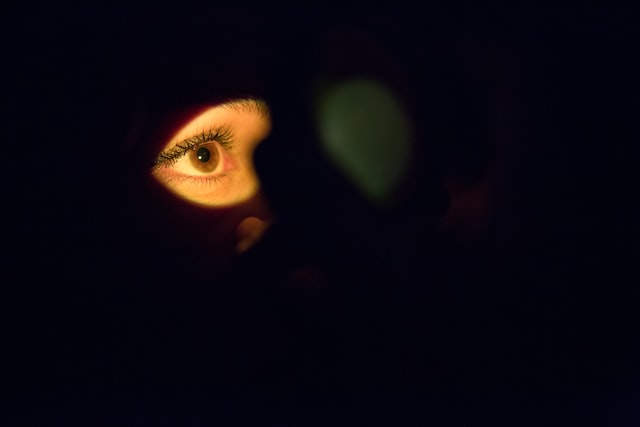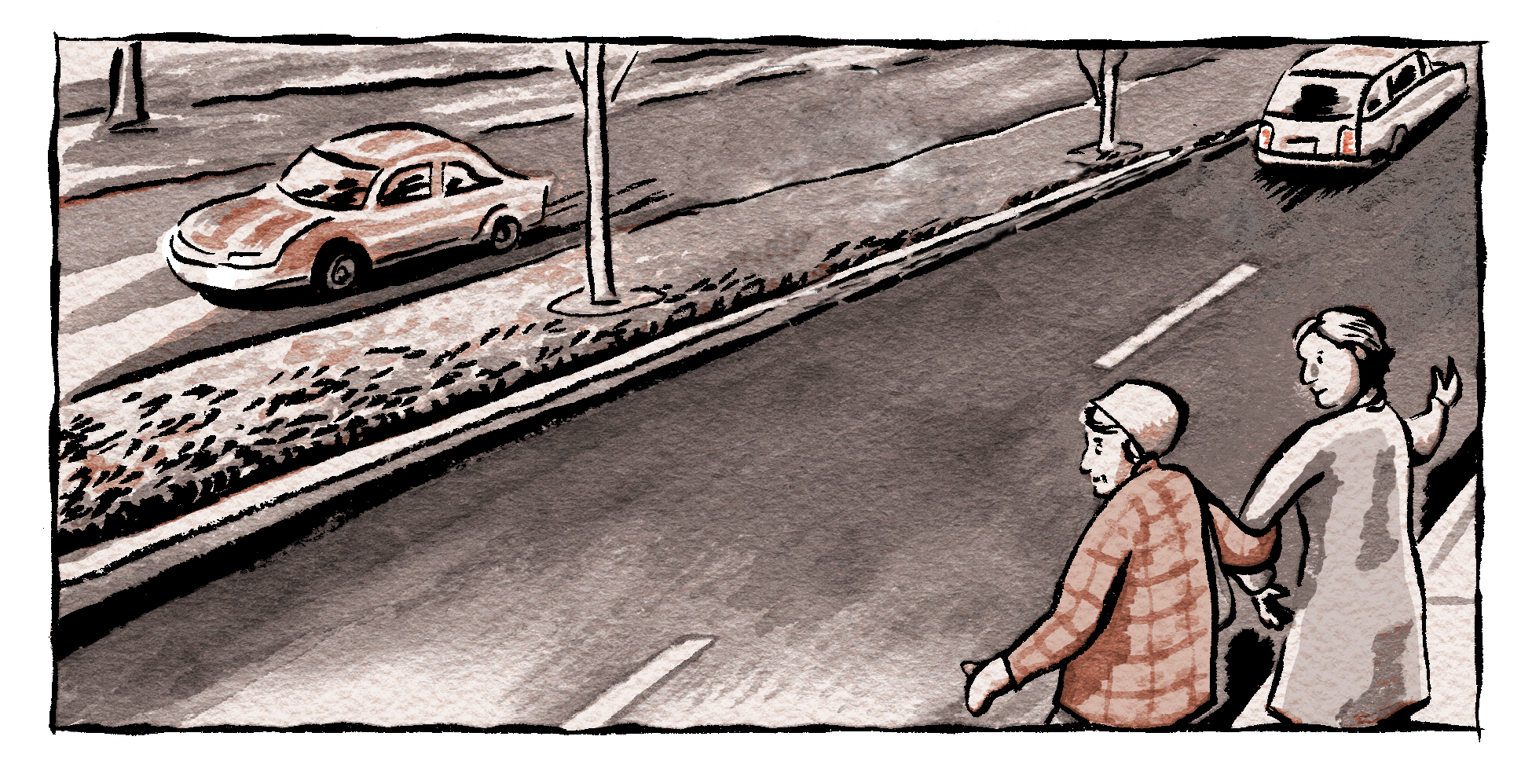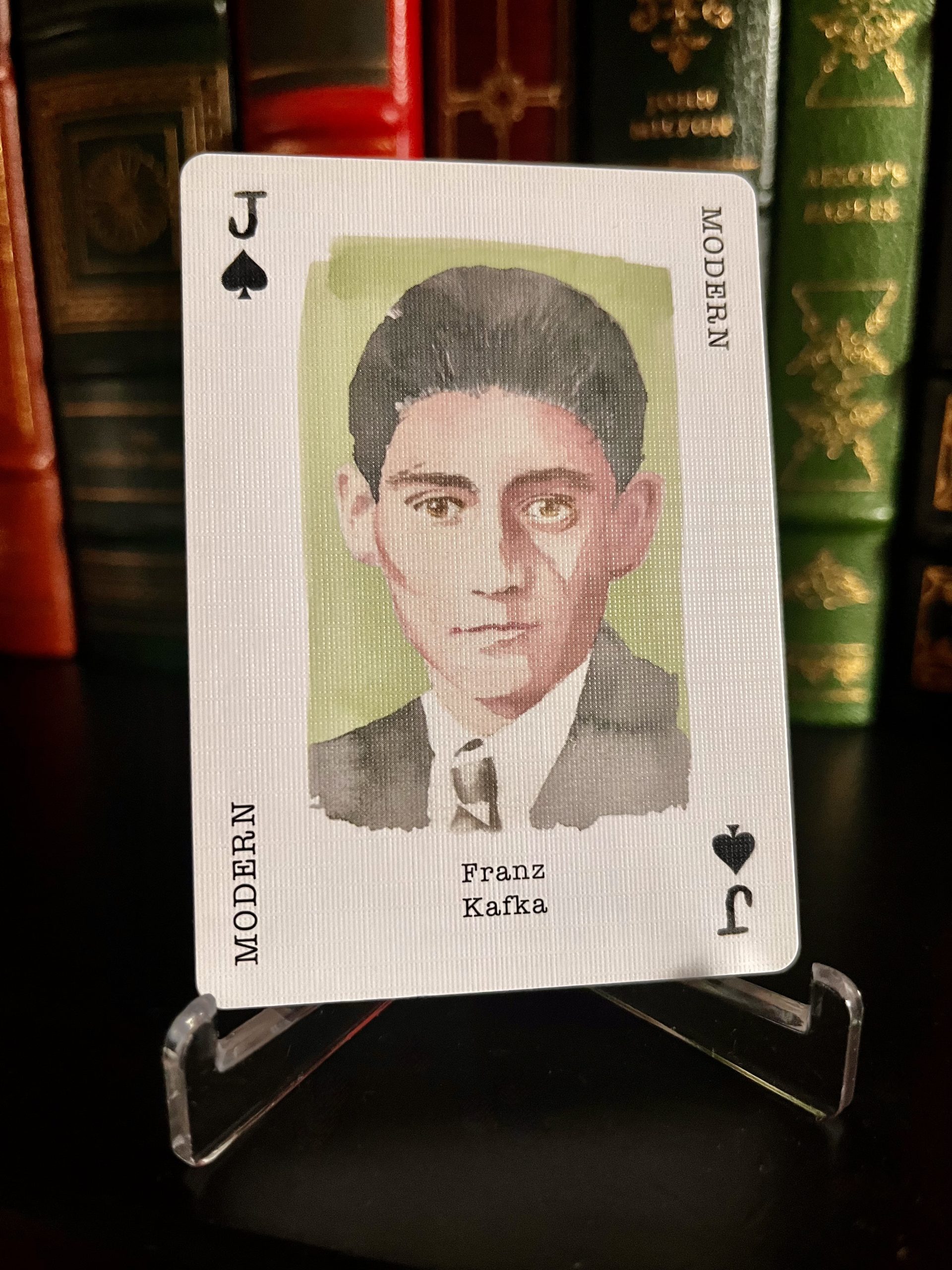Books & Culture
Everywhere I Look, No One Looks Like Me
Disability Studies and fiction helped me stop searching my pigment for meaning

When I’m born in May my parents think I look perfect. And I do, at first. But when they look closer into those newborn baby eyes, they see the black and purple specks floating around the white iris of my right eye—a phenomenon not inherited from my new family.
As a toddler, my mother wheels me into eye doctor appointments where they force my lids open and drop down orange liquid as I stare up at the ceiling lights until my eyes go fuzzy. These drops make them heavy, like bowling balls rolling around my head. My vision becomes blurry and I can just make out the hot air balloon at the very end of the big hulking gray machine they sit me in front of. I place my chin on cold metal as a doctor flashes bright yellow lights across my vision. He tells me to look at his ear, the corner, the floor, my mom. I do as I’m told.
I place my chin on cold metal as a doctor flashes bright yellow lights across my vision.
Around ten years old the pigment in my eye leeches out across my skin. “It must have been a result of puberty,” mom says. “The darker skin wasn’t there when you were born. It grew on you.” The spots find their way across my under eye, painting the circle purple and blue and black. People start asking if I’ve been punched. They say things like, “Are you alright?” Or, “How did you get the black eye?” Or, “I’d hate to see the other guy.” These are people in grocery stores, at my brother’s baseball games, people doing my nails on mommy-daughter dates. These are people who don’t know me but feel entitled to ask.
My first job is at my local Goodwill. I man the cash register and put back clothes people try on. One day, a gruff-looking man in a white t-shirt and light wash denim jeans saunters up to my register. He throws the shirts and pants down with a loud thud, puts his right hand on the counter, and leans forward with all his weight.
“So who punched you?”
“What?” I ask, convinced that I must have misunderstood. “I’m sorry?”
“Your eye. Who punched your eye?”
My body goes hot and I can feel the rising nausea signaling a panic attack. My whole body shakes. I look behind him and around me, begging for an escape, but I can’t see one. My knee goes crazy, banging against the white drawers beneath the table and my left hand darts to my right arm, sharp fingernails digging into my skin as I bring myself back to this moment, back to reality.
“Uhm, no one. It’s extra pigment; I was born with it.”
“No, come on. You can tell me. Who punched you? Your dad? Disgruntled boyfriend?”
“No, sir, it is extra pigment. I was born with it. I promise I wasn’t punched.”
“Come on. Who did it?”
I stammer out my answer one last time. It finally seems good enough.
I stammer out my answer one last time. It finally seems good enough, or he got bored, because instead of persisting any further he just shifts his weight, puts his hands in his pockets, shrugs, and says “I guess that’s what we’re calling it now.”
I’m silent as I ring up his items. He pays, leaves. I turn off my register light. Tears stream down my face before I make it to the bathroom.
I daydream in the car, head knocking against the glass, about laser removal treatments. I don’t have a boyfriend like the other girls in school and I know it’s because of my pigment. Mommy-daughter dates turn into dermatology appointments and makeup counter sessions looking for a foundation thick enough to cover my skin.
Everywhere I look, no one looks like me.
Parts of my body, parts of myself, are always available to the public: my arms, my legs, my stomach, my hair, my skin, my eye. It’s too much. I’d give anything to shrink down, for no one to see or touch this body.
I’m accepted to Skidmore College after bonding with the English chair about our mutual interest in sign language. She has long reddish brown hair, slim features, and a strong face. She immediately intimidates, wearing a stunning silk blouse with black work pants. When she hears I’ve always wanted to learn ASL, she dittos the desire. She tells me that when I get into Skidmore, I must take her freshman seminar, Extraordinary Bodies. “It’s an introduction to disability studies,” she says. “I think you’d really like it.”
Who gets to decide what is a disability and what isn’t? What about folks with abnormalities?
Disability studies is a new term to me. The DSM-5 teaches me terms like “visible disability” and “invisible disability.” The terms feel familiar and yet alien on my tongue, as if it doesn’t belong there. As if I’m trying to cram it in.
We read Sula in college. I completely miss Morrison’s mention of a birthmark. I tell my professor, “I think it’s because I have a birthmark on my eye, too. I think it was just a normal feature to me. I read it, absorbed it, and moved on. I didn’t recognize it as something abnormal.”
Sula doesn’t have a disability. Or does she? Did we read Sula for Shadrock alone? Who gets to decide what is a disability and what isn’t? What about folks with abnormalities? Where do they fit? Why do I want to fit? Am I appropriating disability studies? What am I so scared of?
Later, in graduate school, I co-teach a five week workshop for middle schoolers. My partner is a towering fantasy writer with one hand. For the weeks leading up to our first class together, I chastise myself for wanting to say something. Maybe joke about how the writing institute put the two marked kids together. But I can’t decide if my pigmentation is abnormal enough, or if I’m making a big deal out of nothing. Maybe my whole obsession with defining it and finding community is just disguised narcissism. Maybe I’m not that special.
“Do you think the kids will say anything?” I finally ask, laughing in an attempt to hide fear.
What did I expect Will to say? Maybe look hurt, eyebrows furrowed in distaste. Maybe he’d curse me out for comparing my silly little pigment to his amputated arm. And yet that fear itself is internalized ableism — the idea that he has it worse simply because his body is more different. If I know anything about Will, it’s that he manages. He types, by one hand, thousands upon thousands of words, handfuls of characters that are themselves “abnormal” and disabled in various ways. And when he speaks, he gestures animatedly with both arms. Sometimes, deep in thought, he rubs the stump of his left arm. He’s found his normal. He tells me he hadn’t thought about it, but “They’re kids; they’re curious. I might say something because I’m sure they will. We are marked. No use in ignoring it.”
The students never mention anything. But Will does use our abnormalities for an example when discussing a prompt with them. They’re aspects of ourselves we can pull on, make meaning out of — but only on our own terms. As the cliche goes, it’s our differences that make our stories more interesting.
I went to Sarah Lawrence College for my master’s, the same school as Lucy Grealy, an author and person who toed the line between disability and deformity. In her memoir, Autobiography of a Face, I see my own ruminations on perception and sight replicated in someone else. Of wearing a mask she writes, “I felt wonderful. It was only as the night wore on and the moon came out and the older kids, the big kids, went on their rounds that I began to realize why I felt so good. No one could see me clearly. No one could see my face.” And I cry the first time I read it because I see myself, right eye caked in a mask of makeup, aching to go unnoticed.
Still, I ask myself: What right do I have to compare my experience to Lucy’s?
Eventually, I stop wearing concealer around my black eye. Much like Hannah Walhout, who writes about being an incredibly tall woman in “Attack of the the Six-Foot Woman,” I can’t exactly pinpoint the time things changed. “It was probably, as with anything,” she writes, “a gradual accumulation of minor events and small recalibrations: a conversation here, a casual touch there, time spent, self-talk, moving toward acceptance of the things I cannot change.” It’s two things at once: an ultimate submission to reality, and a deep transformation into empowerment.
I see myself, right eye caked in a mask of makeup, aching to go unnoticed.
As a culture, we are constantly altering our concept of normal. Bodies are made into trends and profited off of. For years we have one standard, and then suddenly it changes. Headlines hit the news that “heroin chic” is in again, and we internalize that, molding our bodies from their normal state and into something else. Much the same, disability—as a category we fit people into—is not an inherent mode of existence. It needs someone or something else to be cast as normal, or standard—someone to be ostracized against.
“[The pigment is] what makes your eyes blue or green or brown. I just happen to have more of it. It doesn’t affect my sight.” This is what I actually tell people. Before, I never realized how charged that language is. My entire explanation is an attempt to normalize the pigment for other people, to make it recognizable. What happens if I stop doing this?
Lucy spent her whole life looking for the next surgery that could fix her jaw. And, yet, at the same time, she was deeply loved, sought after by the community around her. In Sula, the birthmark transforms and morphs depending on outside perspectives of the body it paints. Sula’s not perfect, but it’s not because of the blooming rose on her cheek. And she knows that. Perhaps the weight of our abnormalities depends on how much we give it.
The social model of disability argues that the environment, not people with disabilities or abnormalities, is at fault.
Markers like “disability” or “ability” are tenuous. The social model of disability argues that the environment, not people with disabilities or abnormalities, is at fault. And that if society prioritized accommodations and change, those barriers would cease to exist. So why am I obsessed with deciding if I can attach myself to the disability community if, by this logic, disabilities aren’t necessarily an innate nature, but rather a response to an inaccessible world? Not that anyone’s experience is invalid or made up, but since the idea of normality is a social construct, then so is any divergence from it. This is something I learned in every disability studies class I took. In fact, the social model is internationally recognized as being the model. I’ve spent so much time using the academic analysis of media and representations, when this maybe explains everything: Our experiences and the way we view ourselves, with disabilities or not, are too often decided for us.
A birthmark is defined as “an unusual and typically permanent brown or red mark on someone’s body from birth.” It’s not a perfect fit for my pigmentation, but it’s close. I think what I’m trying to do is normalize the abnormal, stop attempting to fit my pigment into an already existent reference point while arguing for a change in what normal encompasses.
When I was younger, I used to tell myself stories to feel better about my perpetual black eye. I’d try and convince myself how cool it was, that I was unique, separated from everyone else. It was that time in my life where all I wanted was to be distinguishable from my peers and so like Sula’s, my pigment transformed into what I needed. At some point, I traded that for a desire to fit in. And the pigment morphed again, into a threat. Now, I want to try something altogether new: let my pigment exist without searching it for meaning.








